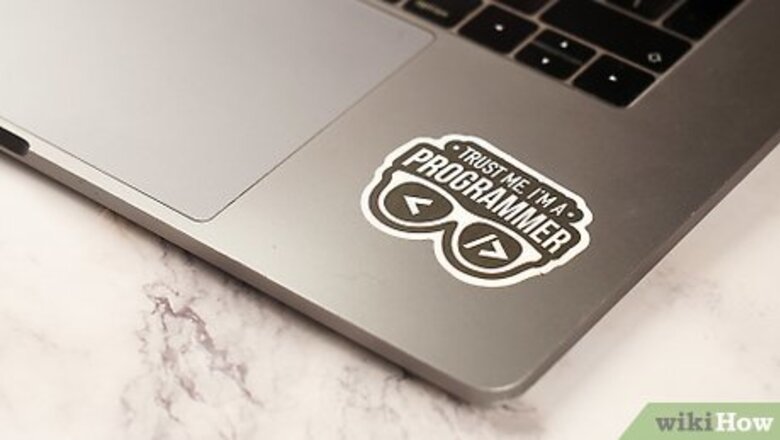
views
- Use your fingernails, credit card, or thin, plastic putty knife to scrape off the sticker.
- To remove residue, use a damp, lint-free cloth. Apply a drop of dish-soap for mild stickiness.
- With stubborn residue, use rubbing alcohol, tape, or a mildly abrasive scrubbing pad.
Scraping off the Sticker
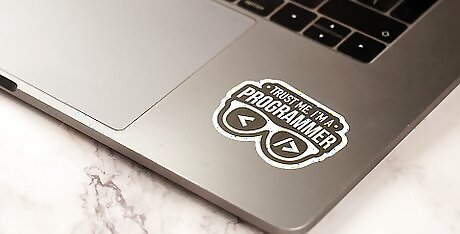
Try scraping off the sticker if it's been there for under a year. If the sticker is relatively new, you should be able to peel it off without leaving behind much residue. However, over time, the glue backing separates from the printed material, which makes the sticker harder to remove cleanly. If your sticker has been in place for more than a year, you may have to use water, alcohol, or another cleaning solution to remove the sticker or leftover adhesive.
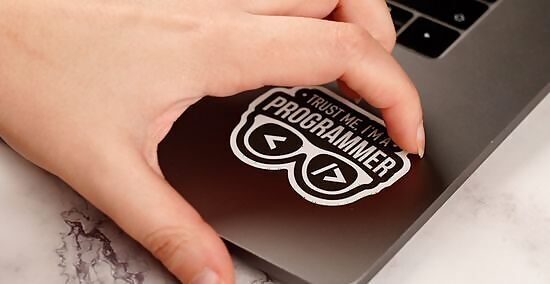
Start peeling at one of the sticker’s corners. Use your fingernails to work at a corner until you’ve lifted it off of the laptop’s surface. If your nails are trimmed short, use a thin plastic putty knife or a credit or debit card. If you use a putty knife or credit card, be careful not to scratch the laptop's surface. Move the putty knife or card slowly instead of aggressively scraping, and try not to press it hard into the laptop surface. Be sure to use a plastic knife or card instead of a metal tool. Manufacturer stickers will be thicker and heavy duty, but they should come off with some effort.
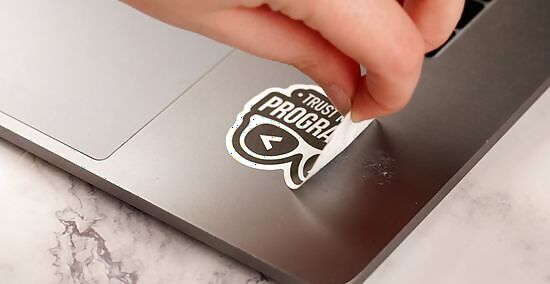
Pull the sticker up slowly from the peeled corner. As you pull the lifted edge, try to work at the point where the sticker meets the laptop with a fingernail to help keep the sticker intact. Peel slowly until you’ve lifted the sticker off of the laptop. Peeling fast and pulling the lifted edge too hard could tear the sticker or increase the chances of leaving behind residue. If the sticker comes off clean, you’re all set! If it left behind adhesive goo, don’t worry. There are plenty of tricks for getting rid of adhesive.
Removing Adhesive
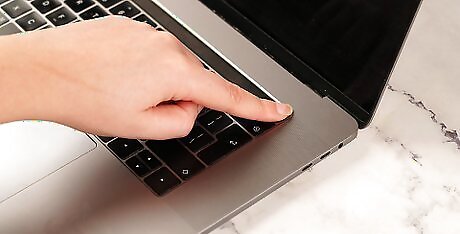
Power off and unplug your computer. If you haven’t already, shut down and unplug before attacking the adhesive. If you can remove the battery, it’s also a good idea to do so whenever you clean your laptop. You’ll use water or another liquid to clean your laptop, and you don’t want to risk shocking yourself or damaging the computer.
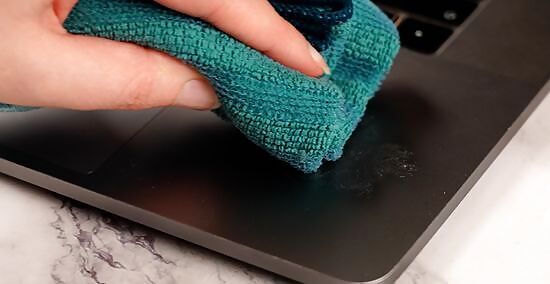
Use a damp, lint-free cloth. Soak a clean microfiber cloth with hot water, then wring it out well. Rub the spot with tight, circular motions and firm pressure. With a little elbow grease, you should be able to scrub away the residue in a couple of minutes. Take care not to get moisture into any openings in the laptop. Damage due to liquids may not be covered in your warranty. For any cleaning project, it’s wise to start off with the gentlest method available. That way, there’s a lower risk that you’ll alter or damage the finish of the surface you’re cleaning.
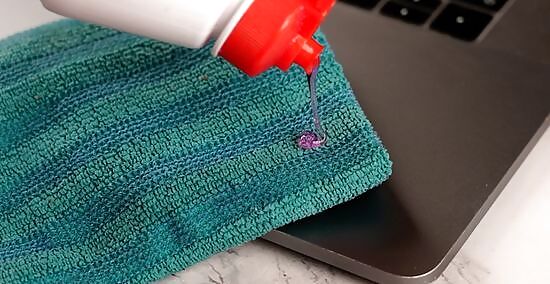
Add a drop of mild dish soap to the cloth, if necessary. If the area still feels sticky, run the cloth under hot water again and squeeze a drop of dish soap onto a corner. Rub the corner a bit with your fingertips to lather the soap, then rub down the sticky area. When you’re finished, use the non-soapy parts of the wet cloth to wipe away any suds. Never pour dish soap, spray aerosols, or apply any other cleaning solution directly onto your laptop. Always apply a cleaner with a cloth.
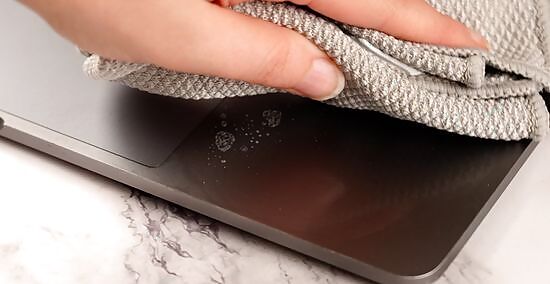
Wipe the surface with a dry cloth. Once you’ve finished wiping off the adhesive, dry the surface with another clean, lint-free cloth. Drying off the area helps prevent streaking, especially if you’ve removed a large sticker from your laptop’s outer cover.
Dealing with Stubborn Residue
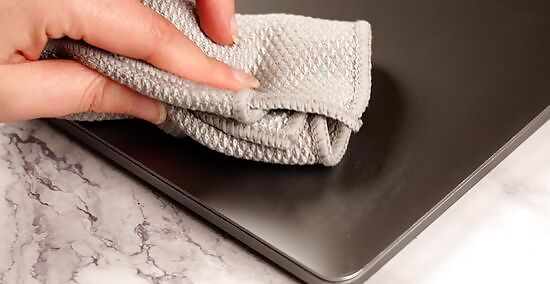
Use 90% rubbing alcohol. To remove stubborn adhesive residue, dip a corner of the microfiber cloth in rubbing alcohol. Use tight, circular motions to scrub off the sticker goo. If you don’t have rubbing alcohol, use a 1-to-1 mixture of white vinegar and warm water. Vodka would work well in a pinch, too!
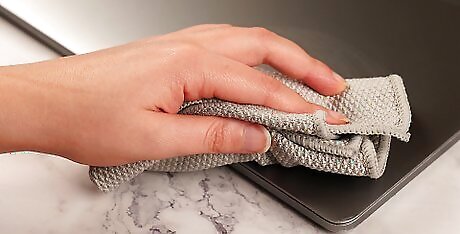
Hold an alcohol-soaked cloth over the area. If glue residue is still sticking around, dip your cloth in alcohol (or vinegar diluted with water) again. Place the cloth onto the sticky area, and let it sit for 2 to 3 minutes. That should dissolve any remaining stubborn gunk. Rubbing alcohol shouldn’t discolor or damage the plastic or aluminum used for laptop casings. However, check the area every 30 to 60 seconds to be safe.
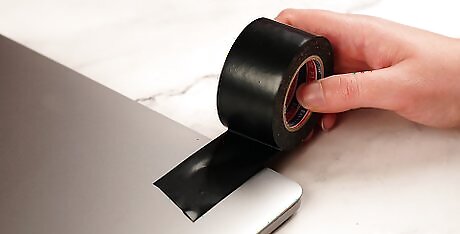
Slide tape over the stuck-on residue. Cut off a 2 to 3 in (5.1 to 7.6 cm) piece of duct tape (or other sturdy, sticky tape). Fold over a small portion of an end to make a non-sticky handle, then rub the sticky surface of the tape over the adhesive residue. If there’s any stickiness left over after using the duct tape, wipe it away with a cloth dipped in hot water or rubbing alcohol.
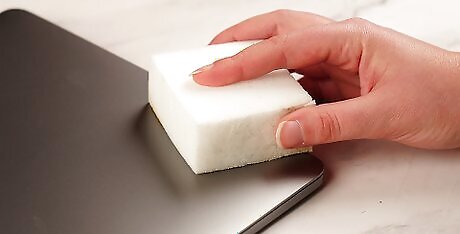
Use a mildly abrasive scrub pad. Using light pressure, wipe the sticky spot with a nylon or melamine foam scrub pad, such as a Mr. Clean Magic Eraser. Soak it with water first and give it a go. If water alone doesn’t remove the gunk, try adding a drop of dish soap or dab the pad with rubbing alcohol. Rub the sticky area with the scrub pad gently. Nylon and melamine foam scrub pads are mildly abrasive, so be careful not to scratch the surface of your laptop.
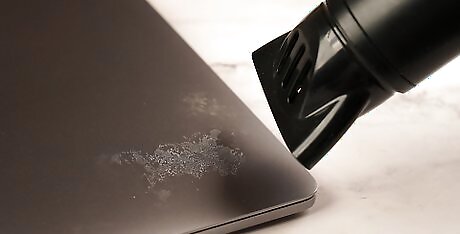
If all else fails, use a blow dryer to loosen the residue. A blow dryer can melt and loosen glue, but it should be one of the last methods you try. Set it to low or medium, and aim it at the gunk for about 30 seconds. Use a cloth, putty knife, or credit card to get rid of the remaining residue. Even if your computer is off and unplugged, you don’t want to risk overheating it or damaging its internal parts. Stick to a low or medium setting, and use it in 30-second intervals to avoid getting your laptop too hot. If you collect stickers, consider purchasing a display for them if you don't want to stick them on your laptop or other items.




















Comments
0 comment